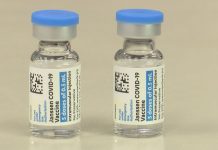Fasting was recommended by a Toronto nephrologist to lose weight. Another Canadian study says daily serving of pulses aid in weight loss.
Eating about 3/4 cup (130 grams) each day of these foods known as pulses led to a weight loss of 0.34 kilograms (just over half a pound), in a systematic review and meta-analysis of all available clinical trials on the effects of eating pulses.
Just one serving a day – three-quarters of a cupful – of beans, peas, chickpeas or lentils is enough to contribute to modest weight loss by making people feel fuller and by vastly reducing “bad cholesterol” levels, according to new research.
Almost 1 000 adult men and women lost an average of 0.3kg over six weeks by adding a single serving of pulses to their diet.
Unlike other diets, or weight-loss programmes, the study showed that the effects occurred with little effort at cutting down on other foods.
Pulses can be bought tinned or dried – both are easy to use. Tinned pulses have already been soaked and cooked, so just heat them or add straight to salads, cold from the tin, after draining and rinsing.
Dried pulses need a little more preparation. With the exception of lentils and split peas, dried pulses need to be soaked in cold water before cooking.
Cooking times vary, depending on the type of pulses and how old they are, so follow instructions. Dried kidney and soya beans contain toxins, so it’s important to make sure they have been cooked properly, to destroy the toxin, before you eat them.
Lead author Dr Russell de Souza, a researcher at St Michael’s Hospital in Toronto, Canada, said: “Despite their known health benefits, only 13 percent of Canadians eat pulses on any given day, and most do not eat the full serving.
“So there is room for most of us to incorporate dietary pulses in our diet and realise potential weight management benefits.”
His team’s research, published in The American Journal of Clinical Nutrition, builds on previous work at the hospital which had showed eating a daily serving of pulses makes people feel fuller than if they ate a controlled diet.
Eating pulses can also significantly reduce LDL, or “bad”, cholesterol – named because it contributes to plaque, a thick, hard deposit that can clog arteries and make them less flexible – by around 5 percent and thus lower the risk of cardiovascular disease.
De Souza said 90 percent of weight-loss interventions fail, resulting in weight regain, which may be due in part to hunger and food cravings.
“This new study fits well with our previous work, which found that pulses increased the feeling of fullness by 31 percent, which may indeed result in less food intake,” he said.
“Though the weight loss was small, our findings suggest that simply including pulses in your diet may help you lose weight and… prevent you from gaining it all back.”
However, scientists have also found that populations with vegetarian diets have a gene which can raise the risk of heart disease and cancer.
US researchers have found that people who have led vegetarian lifestyles for generations in areas of India, Africa and East Asia have evolved a “vegetarian gene” variation.
The gene identified by scientists at Cornell University helps those who eat plant-based diets to process omega-3 and omega-6 fatty acids into compounds that help the development of the brain and control inflammation in the body.
Scientists found a similar gene variation for fish in Inuit populations of Greenland, where seafood is a staple of the diet.
However, the vegetarian gene variation could also cause a spike in the production of arachidonic acid, which makes the body prone to inflammation and has been linked to heart disease and cancer.








![Reno Man drives through crowd of Columbus Day protesters, hits five [Video] Reno Man drives through crowd of Columbus Day protesters, hits five [Video]](https://webtopnews.com/wp-content/uploads/2016/10/Reno-Man-drives-through-crowd-of-Columbus-Day-protesters-hits-five-Video.jpg)




